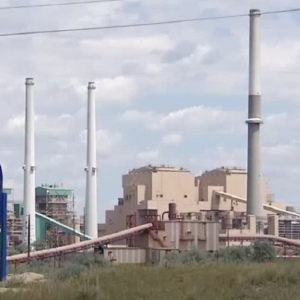By Evelyn Pyburn
We have a government right now that is trying to destroy America’s ability to create new wealth. That best explains everything that is happening.
That shouldn’t be surprising, because that is the only way to destroy the US. It is after all, our amazing ability to produce, and having the freedom to do so, that has made our country strong since its founding, and that remains the source of our power and influence in the world today.
Many people do not know that it was very much because of our country’s ability to gear up production and the people’s willingness to work tirelessly in support of our troops that won WWII. At root of that miraculous response was the freedom that people and industry had to react quickly and creatively and fervently, to produce all the things needed by the military. When Pearl Harbor was attacked, there was almost nothing in the US with which to conduct a war except for our production capability.
Our greatest defense of freedom, far more so than armies and government, has always been the ambition and spirit of workers to work and businesses to innovate and produce. It is in our DNA. Whatever else you have to say about Americans, we have been the greatest wealth generators on earth, in all of history.
Great generation of wealth is what has backed up the American dollar far more so than gold and silver.
No matter what insane policies have been put in our path, they have always failed to be as devastating as predicted because most analysts almost always failed to fully appreciate, or even recognize, the staggering level of wealth that this country produces and is capable of producing. Not that progressive policies haven’t been harmful, but despite intent, they have failed to erode the basics of our economic foundation, because we, the people, have always generated more wealth than what adversaries have ever been able to destroy.
And they DO try to destroy it. It’s been coming at us from all directions. We hear about it in the news, we feel it, we see it, but can’t comprehend that that is really what they mean to do.
Their first target of destruction is the individual’s right to choose in regard to how we want to live our own lives. If government can force you, as an individual, to get vaccinated, is there anything they can’t force you to do? If you accept the authority of government to do that, then for progressives the battle is won.
And, they win forever, if they target children in their most formative years, with a profound lesson of acquiescence to authority, which is happening right now with mandates to wear masks in school.
Eliminating our right to own firearms is a most important part of undermining our liberty and the individual’s ability to be self-sufficient. It is not only a means of self-protection but for hunting for food and defending our property.
The next step to destabilize the individual’s ability to create wealth, is to devalue and erode the means of exchanging value for value. They must destroy the strength of the dollar by spending money that doesn’t exist, to the tune of trillions and trillions of dollars. Flooding the economy with money that is based on nothing more than the value of paper smeared with green ink, such is an absolute guarantee to inflate prices of everything we use for producing. It is a huge tax that goes largely unrecognized as such by most citizens.
It is worse than normal taxes because it impacts everything indiscriminately. At least income or property taxes are something you pay only if you have an asset which generates the tax. Inflation impacts the poorest of the poor. It also devastates and disrupts markets, but most importantly it hugely cripples the ability of Americans to produce.
Beyond that there are policies and laws that are striking at the very core of markets, from the shutting down of pipelines to pushing farmers off the land; from forcing businesses to close or to reduce capacity, to forcing them to shut out workers from job opportunities because they refuse to get vaccinated; from encouraging workers not to work with infusions of largess of federal unemployment or child care benefits, to curtailing business conferences or gatherings where information and ideas are shared; by making travel difficult and limiting citizen interaction, by disrupting supply lines, to crippling distribution systems; by increasing production costs by curtailing energy production which pushes up prices, whether it is oil and gas or putting energy plants out of commission; by instilling distrust and fear to go shopping because of violent demonstrators who murder innocents and burn businesses.
Is there any aspect of our lives that hasn’t been assailed by unrelenting and disruptive mandates that are placing life in turmoil? Not even individual efforts to be prepared for any catastrophe, most especially an overbearing government, are being overlooked. Why else would media belittle and demean people who raise, prepare and store their own food by urging people to distrust “preppers” as “extremists.” How can you be an extremist for being prepared for barren grocery store shelves? Or contaminated water supplies? Or power failures?
The only answer that can be, is that if everyone was prepared for food shortages and were able to provide for themselves, they would be impervious to threats, less compliant and more capable of continuing to produce. They are considered “extremists” because they would not be part of the middling, compliant crowd.
One of the lessons that we should all have learned with the shut-downs of businesses and stay-at- home mandates that took workers away from jobs, is how important everyone is and how vital every job is in contributing to a strong vibrant market place. There is no job so menial or career so mundane as not to be significant to the well-being of a community and the success of our society. It is these activities — most often taken for granted as just everyday life — that is the foundation of our liberty, secures our safety and sustains our economy.
It is every citizen’s ability to contribute, to produce and to provide for ourselves and our families that shores up freedom by making the power mongers irrelevant to our lives.
If citizens can generate wealth – everything they need – what do they need government for? Seekers of power over others cannot allow us to be self-sufficient. They see that citizens must be subjugated to the state and be of a mind to believe they need government. We must be convinced that we need the wielders of power, for them to retain power.
The greatest defense we can put before the enemies of freedom is a determination to continue to be productive and self-sustaining.




